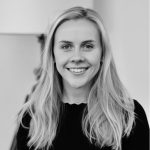If you’ve been presented with a payment error code and don’t know what it means, don’t panic – you’re in the right place! In our updated guide, we’ll be taking you through the list of common card decline codes and how to quickly resolve an issue when it happens.
There is nothing more frustrating than when a payment transaction fails. Not only can this result in costly technical fixes for your business, but it can also reduce the trust that a customer has in your organisation. Not to mention the loss in revenue as impatient customers abandon their purchases entirely.
At Acquired.com, we’re payment processing experts so we know a thing or two about error codes. In this guide, we explore:
- Why payment error codes happen
- The most common error codes for both businesses & customers
- How to quickly navigate or fix a payment error when it occurs
If you’d like to speak to a member of our team directly, simply get in touch. Our Support Team is on hand to help you make complicated transaction issues a thing of the past.
So, Why Do Payment Error Codes Happen?
Some payment codes are much more common than others.
The most common payment errors are usually due to an issue with the card or card verification – rather than any technical errors throughout the payment process.
These types of error codes often come about due to:
- Expired cards
- Transactions being cancelled by the cardholder
- Cards being over the credit limit
- Fraudulent or suspected fraudulent transactions
- Incorrectly entered card details, such as the card number, date, or CVV
- Damaged cards (for in-person transactions only)
- Technical issues with payment processors
Payment Error Codes for Businesses and What They Mean
Let’s take a look at some of the most common payment error codes a business might see.
If you don’t find the error code you’re looking for, check out our Issuer Response Codes for the full list.
14 – Invalid card number/no such number
If this response code occurs, it is more than likely that the customer has entered their card details incorrectly.
The card issuing bank will decline the transaction if the card number doesn’t exist or doesn’t match the rest of the card details entered.
What to do: The customer should be advised to double-check and reenter the card details to complete the transaction again. If this still doesn’t work, they should contact their issuing bank for further advice.
41 – Lost Card
Card schemes keep a real-time database of current card numbers. As cards expire or are cancelled, the database is updated and, as soon as a card is out of circulation, it’s flagged in the payment process.
If a card has been reported as lost and has since been cancelled, this will be flagged during the transaction. The transaction should then automatically decline.
What to do: You should inform the customer that the card has been reported as lost. You should not attempt to process the transaction again as you may be dealing with a case of attempted fraud. A genuine customer can again contact the issuing bank for more advice.
43 – Stolen
Stolen cards are also reported to banks and card schemes. Both banks and card schemes will block transactions with a 43 error code. This response code specifically flags the card as stolen, rather than missing or lost.
What to do: For in-person transactions, code 43 means that the business should ideally keep the reported card and not return it to the customer. For card-not-present transactions, this obviously isn’t possible and in this case, you should report the transaction directly to the issuing bank directly.
If a code 43 appears on a recurring or scheduled payment, the card may have been stolen after the last successful payment. If this is the case, you should inform the customer so they can replace the card and provide their new payment details.
51 – Insufficient Funds
Error code 51 appears when a purchase has been declined due to insufficient funds in the account. Either the funds in a customer’s bank account subceed the transaction amount, or if paying by credit card, they have hit their credit limit.
What to do: You should advise your customer to check their bank balance, overdraft limit, or credit limit to ensure there are sufficient funds in the account. Then, try again with the payment card. Alternatively, they can use a different payment card to complete the transaction.
54 – Expired Card
This error appears if the credit or debit card being used for the transaction has expired. This may also appear if the card date has been entered incorrectly.
What to do: Ask the customer to check that their card details have been entered correctly and that their card hasn’t expired. If there are no issues there, they should then try again. Alternatively, you can ask them to use another card.
1A – 3-D Secure Authentication Required
A 1A error code means that additional customer authentication is needed before certain transactions can be completed.
This may entail 3DS Authentication. As outlined by the revised Payment Services Directive (PSD2), more robust security will be required for certain payment services.
What to do: You should advise thee customer to retry the transaction with 3DS authentication.
Payment Error Codes for Customers
On the customer side, it is more likely that they will see one of only a few payment error codes. The most common of which is “Your payment was declined, sorry. Please try again. (Error code: 40000)”.
This can be prompted when a customer has insufficient funds, incorrect payment information, or the transaction has been flagged as fraudulent.
Learn More About Payment Error Codes with Acquired.com
At Acquired.com, we work closely with all of our customers to ensure that your payment processes are seamless and perfectly suited to your existing infrastructure.
This means fewer payment error codes, payment abandonments, failed payments, business errors, and problems for your customers.
To learn more about how we can help your business get the most out of your payment strategy, get in touch with the expert team at Acquired.com.







